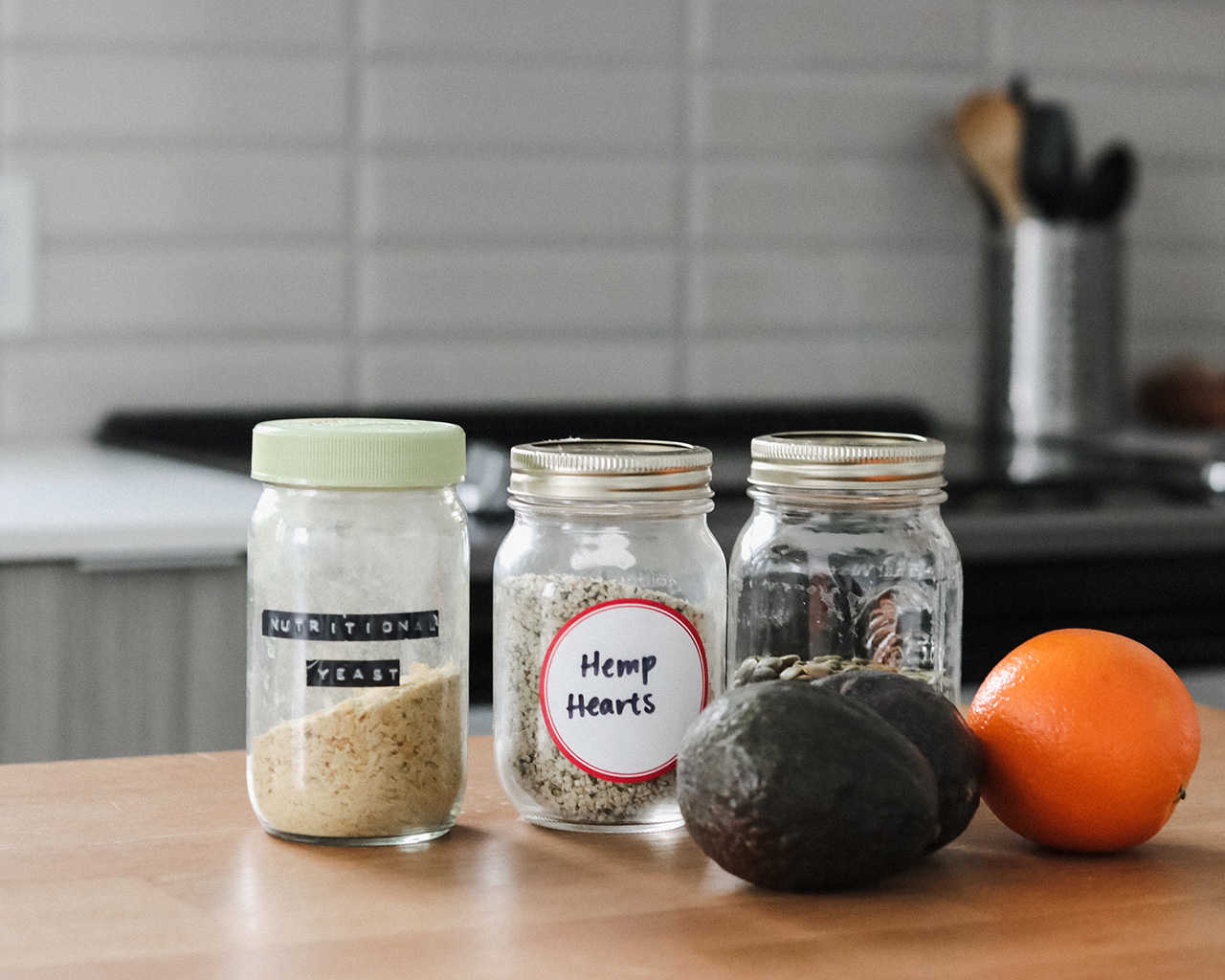Hi everyone! Welcome back to the blog after a bit of an extended holiday hiatus. I mentioned this on Instagram the other day, but this year I’m really having trouble picking up my motivation and getting back on track. It’s been a slow start to the year, but then again I don’t mind slowly easy back into things and allowing myself time and space to settle in.
But, that’s not the topic of today’s article – today we’re talking about low waste grocery shopping. Perhaps one of your new year’s resolutions is to start living more sustainably or try moving towards zero waste. Well, one of the best ways you can do that is by changing up your grocery shopping habits. So in today’s article, I wanted to share some tips and ideas that I’ve incorporated into my routines that might help you get started.
I’m calling this a beginner’s guide because it’s coming from a true beginner. I’m far from being perfectly zero waste – it’s a process, but I find that taking little steps here and there towards my goals is the best way to change over my habits and get them to stick. It always seems more daunting to me than it actually is; for example, before shopping at a bulk store the first time, I had so many questions. How do I do it? What do I need? What kind of things can I get there? In the end, all this fuss was really for nothing because it’s really easy. Change can be difficult but at this point, living more sustainably is becoming more and more necessary. So without further ado, let’s get into the tips I have for creating a low waste grocery shopping routine.
Avoid Packaged Foods
This one seems like a no-brainer, right? If you want to go zero waste, you have to skip the waste! So opting for foods that aren’t packaged over ones that are (when you have the option) is a small switch with a big impact. For example, instead of buying spinach or salad mix that comes in a plastic clamshell container, buy a bundle of spinach (it usually comes with a twist tie around it, but still.) A lot of fruits and vegetables can be purchased without any sort of packaging. An exception I’ve found is cucumbers – I can never seem to find ones that aren’t wrapped in plastic! So if you know of any stores in Canada that sell them like that, let me know in the comments.
Use Re-Usable Produce Bags and Grocery Bags
Those flimsy little plastic bags for produce were actually the first things I ditched at the grocery store a long time ago. I simply pick up the loose apples and put them straight into my cart. If you’re wondering, ‘Won’t they get dirty?’ then I’ll tell you a story. I was once walking through the produce section and I saw one of the employees sneeze literally all over the broccoli they were stocking. Like, no mouth covered, no head turn away, nothing! You have to wash all of your produce really well when you get home anyway, so I just didn’t see the point in continuing to put it in a plastic bag anymore.
Of course, it’s not as convenient to have a bunch of apples and lemons rolling around in the bottom of your cart, especially when it comes time to load up at the checkout. So you can also use re-usable produce bags. Most zero-waste stores should sell them, and if you can’t find them there, then Amazon definitely has them. They are often a light bag made out of mesh material that you can bring with you to the store and use for all of your produce.
Bringing your own re-usable grocery bags to carry your groceries out is also a great habit to get into. We keep ours in the back of the car so that we always have them. When we bring our groceries into our apartment, we hang the bags on the back of the front door so that we remember to take them down with us. As for where to get them, we mostly just re-use old tote bags that we had laying around. If you need to buy some, look for something like a sturdy canvas so that you can comfortably carry a heavy load if needed.
Shop at Bulk Food Stores
We’re lucky that we live close by to Bulk Barn, which is a Canadian chain that sells a variety of foods in – you guessed it – bulk. Apparently it’s really popular among kids these days because there is a whole aisle dedicated to candy. But apart from that aisle, you can actually get a lot of your groceries there. They carry all sorts of things like oats, mixed nuts, dried fruits, baking ingredients, soup mixes, seasonings, teas, protein powders, nut butters, and honey. I’ve even found soap nuts and laundry detergent, pet food and treats, and some of my pantry staples like hemp hearts and nutritional yeast. If you have a store like this near you but have never tried it, I’d recommend just going in and having a look around, taking note of anything you regularly buy at the grocery store that could potentially be bought here instead.
Actually shopping at a store like Bulk Barn goes like this: you bring in your re-usable containers, such as glass jars, tins, and bags. Bring the containers up to the cashier, and they will weigh them for you and write the weight on the lid (also called the tare weight, which is the weight of an empty container.) Then you go around the store and fill up your containers with whatever you like. When you bring them up to the cashier, they weigh them and subtract the tare weight from the total.
As for containers, we mostly re-use old food containers we’ve been collecting – things like peanut butter jars, kombucha jars, mason jars, etc. I have a couple of old tea tins that work fabulously. You can also use cloth bags; I’ve seen some for sale that have a little tag with the tare weight sewn into them which is really useful. So another tip is to start saving your re-usable containers so that you can use them for your bulk food trips.
Use Re-Usables to Store Food
This one doesn’t really fall under the grocery shopping category per se, but it is food-related so I thought I’d throw it in. When you want to store things like leftovers or your sandwich for work the next day, ditch the single-use plastics like plastic wrap and ziploc bags in favour of re-usable alternatives. I’ve found that beeswax wraps work really great as a replacement for plastic wrap. My sister bought me some a couple years ago for Christmas and I haven’t looked back since. You can also buy re-usable sandwich bags that are a great replacement for the single-use plastic ones. Even if you are still using plastic ones, they can also be rinsed out and re-used multiple times.
Cook from Scratch More Often
This one falls into the same lines as the tip to avoid packaged foods. But if you take a look at the grocery store, pretty much everything aside from the produce section comes from a package. So how are you supposed to avoid all of that? The only answer I have for that so far aside from shopping in bulk is to start cooking from home and making things from scratch more often. Unless you enjoy cooking, this is more often than not both inconvenient and time-consuming. It takes time to learn to cook things properly, and then actually cook them. Some won’t have the time or resources it takes to do this, and that’s totally understandable. It’s all about doing the best we can given our situation and circumstances.
Cooking at home comes with a lot of benefits, though. It’s more often healthier since you can control all of the ingredients that are going into your food and there aren’t any unnecessary things like preservatives or added sugars. It can save money as well, depending on the ingredients, but if you stick to simple cooking then it’s a great way to live more frugally.
Things like salads, soups, and sauces can be made at home relatively waste-free. Pinterest is a great place to look for ideas. I also particularly like Minimalist Baker for the simple and healthy recipes. One of my favourite things to make which is pretty low-waste is a vegan mushroom macaroni & cashew cheese. The main ingredients are cashews, nut milk, pasta, mushrooms, nutritional yeast, and seasonings. Most of this I can buy in bulk, aside from the nut milk which I still buy in a container that needs to be recycled. One thing I’d love to try this year is making my own nut milk at home, which would make this meal entirely waste free! I’ve been thinking about making a YouTube video with this recipe, would you be interested in watching something like that?
Plan Meals to Reduce Food Waste
My final tip is to do meal planning which can help reduce food waste. I wrote a blog post about meal planning about two years ago which I will link here. How it works is you plan out the meals you’ll make for the week ahead of time, as well as all of the ingredients you need. This way, you’re only shopping for what you will need and use throughout the week. You can also make all of your meals ahead of time and keep them in the fridge to save time throughout the week.
I find meal planning really helps me when I’m grocery shopping because I have a list that I can stick to instead of wandering around the store, picking up things that I think I could use, but then not actually ending up using them and then they go bad in the fridge. I absolutely hate wasting and throwing out food, it’s one of my biggest pet peeves and makes me feel so guilty and irresponsible. Doing weekly meal planning or even just having a list with me with ingredients I need for some of my staple meals has really helped reduce that waste.
Those are all the tips I have for starting out with low waste grocery shopping! What are some of the ways you’ve reduced your waste when it comes to food? Let me know in the comments below, I’d love to hear from you.
Until next time,

Pin for later



You can also make your own reusable produce bags if you really hate the idea of not bagging your stuff. There are a lot of tutorials that show how to quickly (and cheaply!) make them with either mesh, quilting cotton, or you could even upcycle old clothes you’re through with (if they’re past the point of no return).
Great tip, thank you so much for sharing!